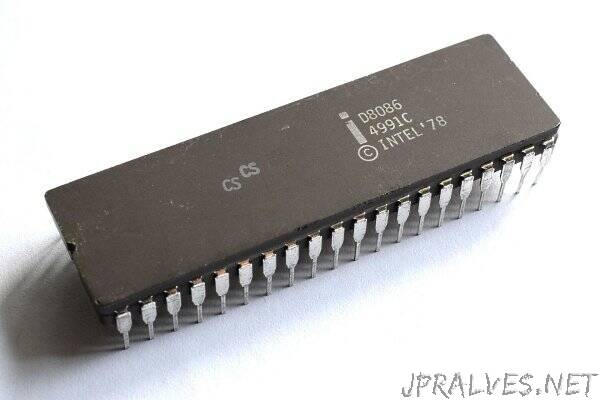
“Recently I realised that, as part of his 8086 reverse-engineering series, Ken Shirriff had posted online a high resolution photograph of the 8086 die with the metal layer removed. This was something I have been looking for for some time, in order to extract and disassemble the 8086 microcode. I had previously found very high resolution photos of the die with the metal layer intact, but only half of the bits of the microcode ROM were readable. Ken also posted a high resolution photograph of the microcode ROM of the 8088, which is very similar but not identical. I was very curious to know what the differences were.
I used bitract to extract the bits from the two main microcode ROMs, and also from the translation ROM which maps opcode bit patterns onto positions within the main microcode ROM.
The microcode is partially documented in US patent 4363091. In particular, that patent has source listings for several microcode routines. Within these, there are certain patterns of parts of instructions which I was able to find in the ROM dump. This allowed me to figure out how the bit patterns in the ROM correspond to the operands and opcodes of the microcode instruction set, in a manner similar to cracking a monoalphabetic substitution cipher. My resulting disassembly of the microcode ROM can be found here and the code for my disassembler is on github.
This disassembly has answered many questions I had about the 8088 and 8086. The remainder of this post contains the answers to these questions and other interesting things I found in the microcode.
What are the microcode differences between the 8086 and the 8088?
The differences are in the interrupt handling code. I think it comes down to fact that the 8086 does two special bus accesses to acknowledge an interrupt (one to tell the PIC that it is ready to service the interrupt, the second to fetch the interrupt number for the IRQ that needs to be serviced). These are word-sized accesses for some reason, so the 8088 would break them into four accesses instead of two. This would confuse the PIC, so the 8088 does a single access instead and relies on the BIU to split the access into two. The other changes seem to be fallout related to that.”
